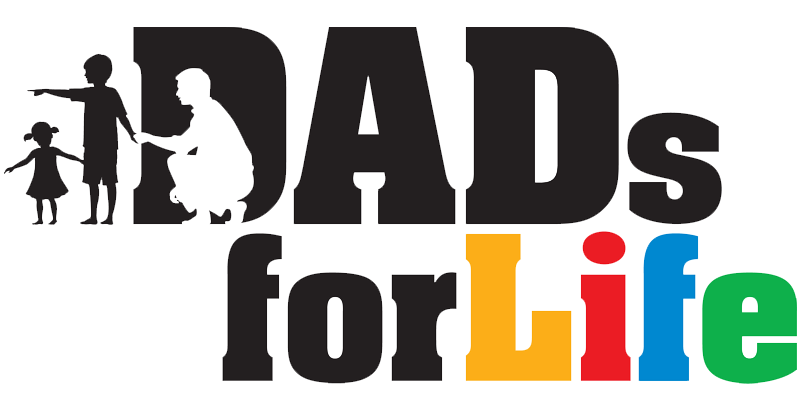Introduction
 The rise of dual-career families has focused discussions on fatherhood towards men’s changing role within families. Less examined are men’s experiences at work – a space that often still defines men’s identities and their fatherhood roles. Certainly, many working mothers continue to shoulder a larger share of family responsibilities than working fathers. However, an absent focus on fathers’ work-life experiences conceals and discourages the growth in the number of fathers who do (seek to) take on more family responsibilities. This research summary reviews international research findings on fatherhood and work.
The rise of dual-career families has focused discussions on fatherhood towards men’s changing role within families. Less examined are men’s experiences at work – a space that often still defines men’s identities and their fatherhood roles. Certainly, many working mothers continue to shoulder a larger share of family responsibilities than working fathers. However, an absent focus on fathers’ work-life experiences conceals and discourages the growth in the number of fathers who do (seek to) take on more family responsibilities. This research summary reviews international research findings on fatherhood and work.
Fathers’ Work-Family Conflict
There is clear evidence that work pressures place constraints on fatherhood.
- Singaporean fathers cite work responsibilities (63%) and financial concerns (53%) as chief obstacles to spending more time with their children (MCYS, 2009).
- In a global study across six countries (Brazil, China, India, Germany, the UK, and the US), male employees cite finding time to spend with family (25%) and financial stress (23%) as their top two work-life challenges (Linkow et al, 2001).
- Half of fathers surveyed in the UK believe they spend too much time at work. 42% think they spend too little time with their children, with this figure rising to 54% for fathers with children under one year (EHRC, 2009).
- A study of white-collar professional fathers in the US found that 57% agreed that “in the past three months, I have not been able to get everything done at home each day because of my job” (Harrington et al, 2011).
- Fathers’ parenting stress in relation to their work and the number of hours they work predict externalising symptoms (such as “acting up” or misbehaviour) in pre-schoolers who attend daycare (Hart & Kelley, 2006, as cited in Fatherhood Institute, 2011). Among fathers of young adolescents, negative work-to-family spillover predicts low paternal knowledge of their children’s daily activities (Bumpus et al, 2006, as cited in Fatherhood Institute, 2011).
Men and Women Appear to Differ in their Experience of Work-Life Conflict
These challenges have for long been experienced by working women/mothers. However, there is less understanding of men’s/fathers’ work-life conflict. Despite converging work and family roles between men and women, these two groups appear to have divergent experiences of work-life conflict.
Men/fathers report lower levels of work-life integration
- Men (25%) are more likely than women (19%) to cite “finding time to spend with family” as a work-life challenge (Linkow et al, 2001).
- Fathers are less satisfied with their working hours than mothers are: 46% of fathers think they spend “about the right amount of time at work”, compared to 61% of mothers (EHRC, 2009).
- Men who work full-time are less satisfied than full-time working women with their work-life balance. 69% of men and 58% of women said that job demands sometimes interfere with family life. 29% of men and 19% of women said that family demands sometimes interfere with work (Park et al, 2007, as cited in Fatherhood Institute, 2011).
- 74% of fathers, compared with 64% of mothers, reported that spending time with the family or finding time for key relationships is their biggest concern in daily life (EOC, 2007).
Rate of increase in work-life conflict is much higher for fathers
- One study comparing fathers in dual-earner couples with children under 18 to mothers in the same group found that the proportion of fathers reporting work-life conflict increased significantly from 35% in 1977 to 60% in 2008, while mothers’ work-life conflict increased less dramatically from 41% to 47% (Galinsky et al, 2008).
Fathers are less likely to perceive that work-life benefits are available to them, or to use them
- 49% of fathers surveyed in the UK said some form of flexible working was available to them, with the most common being flexitime, staggered start and finish times, and working from home. However, only 20% of fathers thought part-time work was available to them, compared to 51% of mothers (EHRC, 2009)
- Compared to female employees, fewer men make use of family leave, choosing instead to take vacation or other discretionary days off upon the birth of a child or other family-related events (Berry & Rao, 1997; Pleck, 1993, as cited in Beauregard & Henry, 2009).
- Even among predominantly white-collared employees of companies that have adopted work-life policies, only one percent of fathers took more than four weeks off to be with their children after they were born, and only five percent took as much as two weeks (Harrington et al, 2011).
- Fathers, as compared to mothers, are more likely to exercise informal or “stealth” flexibility rather than to ask for a formal flexible work arrangement (Harrington et al, 2010, Harrington et al, 2011).
Implications
These findings point to complex constraints on fatherhood. The discrepancy between maternity and paternity leave provisions in most countries is the clearest example that workplaces have not yet caught up with changing gender roles at home. As a result, employed fathers seeking a stronger family orientation may experience more difficulty, relative to employed mothers, in being accepted at work as “family-centred”.
At the same time, workplaces are not the only constraint. Research also shows that the barriers to fathers’ work-life integration can reside within family relationships, maternal behaviours, and fathers’ choices themselves (Fatherhood Institute, 2011). Men’s traditional, strong identification with paid work could partly explain why fathers seem to struggle more than mothers to establish boundaries between work and family.
Nonetheless, the differences between fathers’ and mothers’ work-life experiences call for a stronger focus on fatherhood at work, and for a father-specific view of work-life conflict and integration, if we are to have a better understanding of the work-related barriers to fathers’ involvement in their children’s lives. Our second research summary this month explores some of these issues further.
Works Cited:
- Beauregard, T. & Henry, L. (2009) Making the link between work-life balance practices and organizational performance. Human Resource Management Review, 19, 9-22. Retrieved from http://eprints.lse.ac.uk/25224/1/Making_the_link_between_work_life_balance_practices_and_organizational_performance_(LSERO_version).pdf
- Equal Opportunities Commission [EOC] (2007). Most Britons say working and caring will be harder in 10 years. Press release issued 8 February 2007. Manchester: Equal Opportunities Commission.
- Equality and Human Rights Commission [EHRC] (2009). Working better: Fathers, family and work – contemporary perspectives. Research Summary 41. Retrieved from http://www.equalityhumanrights.com/uploaded_files/research/41_wb_fathers_family_and_work.pdf
- Fatherhood Institute (2011). Fatherhood Institute research summary: Fathers, mothers, work and family. Retrieved from http://www.fatherhoodinstitute.org/2011/fi-research-summary-fathers-mothers-work-and-family/
- Galinsky, E., Aumann, K., & Bond, J. (2008). The national study of the changing workforce: Times are changing: Gender and generation at work and at home. Families and Work Institute. Retrieved fromhttp://familiesandwork.org/site/research/reports/Times_Are_Changing.pdf
- Harrington, B., Van Deusen, F., & Ladge, J. (2010). The new dad: Exploring fatherhood within a career context. Center for Work and Family, Boston College.
- Harrington, B., Van Deusen, F., & Humberd, B. (2011). The new dad: Caring, committed and conflicted. Center for Work and Family, Boston College.
- Linkow, P., Civian, J. & Lingle, K. (2001). Men and work-life integration: A global study. WFD Consulting in collaboration with WorldatWork’s Alliance for Work-Life Progress. Retrieved from http://www.worldatwork.org/waw/adimLink?id=51556
- Ministry of Community Development, Youth and Sports (2009). Fatherhood Public Perceptions Survey.
About the Author: The Dads for Life Resource Team comprises local content writers and experts, including psychologists, counsellors, educators and social service professionals, dedicated to developing useful resources for dads.
First published on 11-04-2012.
